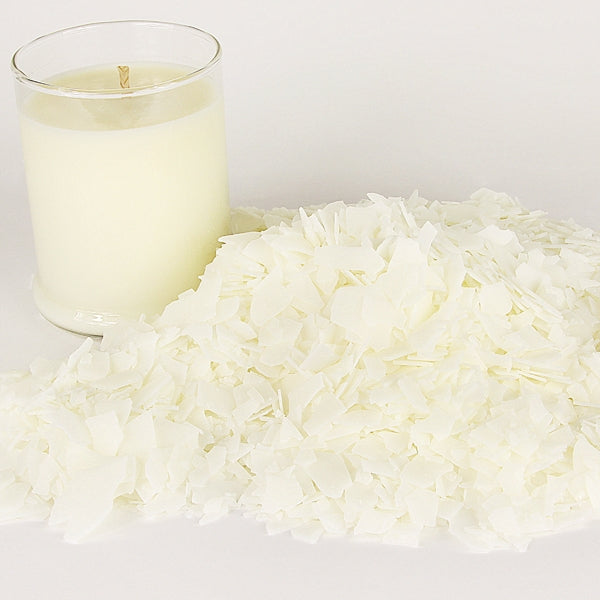Check out the World of Crystal Soy Candles and Home Fragrance Delights
Check out the World of Crystal Soy Candles and Home Fragrance Delights
Blog Article
From Wick to Wax: Recognizing the Chemistry Behind Soy Wax Candles and Their Ecological Impact
As we brighten our rooms with the cozy radiance of candles, there exists a world of detailed chemistry behind the apparently easy act of lighting a soy wax candle light. The option in between soy and paraffin wax extends beyond mere visual appeals, diving into the realm of environmental influence and the really make-up of the materials. Comprehending the molecular structure of soy wax and its burning process clarifies the exhausts launched into our surroundings. Join us as we decipher the clinical details behind soy wax candle lights and discover their implications on our atmosphere.
Soy Wax Vs. Paraffin Wax
When contrasting soy wax and paraffin wax for candle production, it is important to comprehend the distinctive features and advantages of each material. Soy wax is a natural, renewable source stemmed from soybean oil, making it biodegradable and eco-friendly - home fragrance. On the other hand, paraffin wax is a by-product of petroleum refining, which elevates issues regarding its environmental impact and sustainability
Soy wax candle lights burn cleaner and release less soot compared to paraffin wax candle lights, making them a much healthier selection for interior air quality. Furthermore, soy wax has a lower melting factor, permitting a longer-lasting candle light that disperses scent more efficiently. Paraffin wax, on the other hand, has a tendency to shed faster and much less cleanly, possibly releasing hazardous chemicals into the air.
From a sustainability perspective, soy wax is preferred for its biodegradability and renewable sourcing, lining up with the expanding customer choice for ecologically mindful products. While paraffin wax has actually been a conventional option in candle making due to its affordability and simplicity of usage, the change in the direction of environmentally friendly alternatives like soy wax is obtaining energy in the market.
Chemical Make-up of Soy Wax

Burning Process in Soy Candles
The chemical structure of soy wax directly affects the combustion procedure in soy candles, affecting elements such as melt time, fragrance launch, and environmental impact. When a soy candle light is lit, the warmth from why not find out more the fire melts the wax near the wick.
The combustion effectiveness of soy candle lights is influenced by the purity of the soy wax and the high quality of the wick. A clean-burning soy candle light with an effectively sized wick will reduce and generate a stable fire soot development. This not only prolongs the melt time of the candle light yet likewise boosts the launch of fragrances. Furthermore, soy wax candles have a lower ecological impact contrasted to paraffin candles as a result of their naturally degradable and renewable nature.

Ecological Benefits of Soy Wax

Considered a lasting alternative to typical paraffin wax, soy wax provides noteworthy environmental benefits that make it a popular choice amongst eco-conscious consumers. One considerable advantage of soy wax is its renewable sourcing. Soy wax is derived from soybean oil, which is primarily grown in the USA. The growing of soybeans assists support local farmers and minimizes the dependence on non-renewable nonrenewable fuel sources used in paraffin wax production. In addition, soy wax is eco-friendly, suggesting it breaks down naturally without releasing dangerous contaminants into the environment. This particular makes soy wax candles a much more eco-friendly choice compared to paraffin wax candle lights, which are made from oil, a non-renewable resource. Moreover, soy wax burns cleaner and generates less soot than paraffin wax, adding to much better indoor air top quality and minimizing the need for cleaning and upkeep. In general, the ecological benefits of soy wax straighten with the growing demand for eco-friendly and sustainable items on the market.
Recycling and Disposal Considerations
Recycling and appropriate disposal of soy wax candle lights play a vital duty in maintaining environmental sustainability and minimizing waste in households and areas. When it concerns recycling soy wax candle lights, the initial step is to make sure that the candle light has actually shed entirely. This can be attained by permitting the candle light to melt till the wick is no more functional, and after that letting the staying wax cool and solidify. When the wax has actually strengthened, it can be meticulously gotten rid of from the container.

In terms of disposal, if his response recycling is not an alternative, soy wax candles are biodegradable and can be securely disposed of in a lot of home waste systems. It is always advised to inspect with local reusing centers or waste monitoring services for specific guidelines on candle light disposal to make certain appropriate handling and environmental defense.
Final Thought
Finally, the chemistry behind soy wax candle lights reveals their ecological advantages over paraffin wax candle lights. Soy wax, originated from soybean oil, burns cleaner and creates much less soot when contrasted to paraffin wax. The combustion process in soy candle lights is a lot more efficient, causing a longer and a lot more also burn. Furthermore, soy wax is biodegradable and eco-friendly, making it an extra sustainable option for candle light production. Recycling and correct disposal of soy wax candle lights further add to their ecological effect.
When comparing soy wax and paraffin wax for candle light production, it is vital to recognize the distinct attributes and advantages of each material (crystal soy candles).Soy wax candles melt cleaner and emit less soot compared to paraffin wax candle lights, making them a healthier selection for interior air quality.Considered a sustainable alternative to standard paraffin wax, soy wax uses remarkable ecological benefits that make it a preferred choice among right here eco-conscious consumers. Soy wax burns cleaner and produces less soot than paraffin wax, adding to better interior air quality and reducing the need for cleansing and upkeep.In verdict, the chemistry behind soy wax candle lights exposes their ecological benefits over paraffin wax candles
Report this page